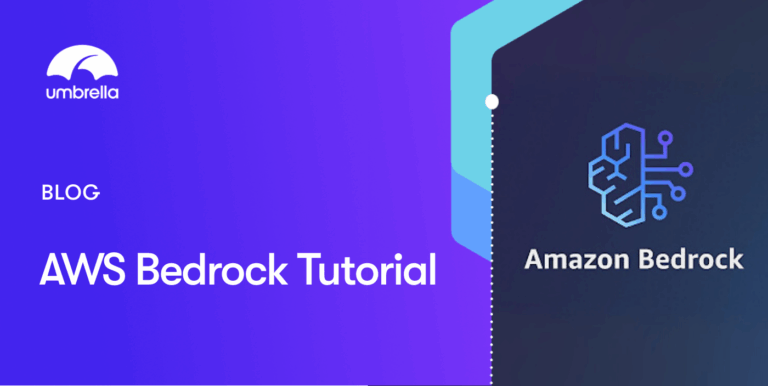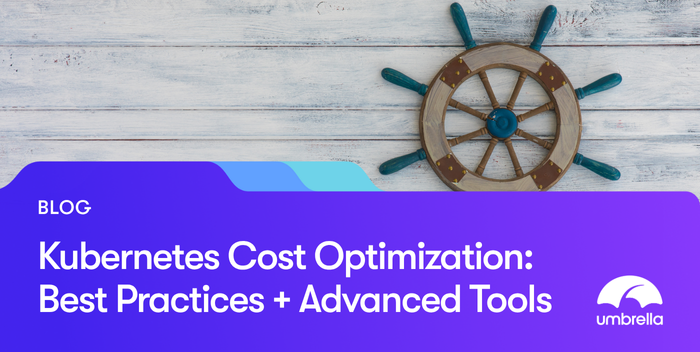Blog Post
19 min read
Kubernetes Cost Optimization: 10 Best Practices + 5 Advanced Tools
As the complexity of Kubernetes environments grow, costs can quickly spiral out of control if an effective strategy for optimization is not in place. We've compiled expert recommendations and best practices for running cost-optimized Kubernetes workloads on AWS, Microsoft Azure, and Google Cloud (GCP).
[embed]https://youtu.be/YH6ydkRVKEo[/embed]
What Is Kubernetes Cost Optimization?
Kubernetes cost optimization is the practice of maintaining Kubernetes infrastructure and workload performance while optimizing cost-efficiency to the max. In other words, it’s a way of improving your Kubernetes performance while maintaining reliability. This entails identifying areas of the Kubernetes environment that are less cost-efficient than others.
Cost optimization strategies include:
Minimizing your number of servers and reducing environment services.
Autoscaling your application or cluster to meet demands and saving costs by shutting down when demands decrease.
Sharing resources across multiple servers.
Optimizing network usage.
Improving node configurations.
Optimizing storage space.
Regularly using sleep more.
Which Factors Contribute to Kubernetes Costs?
Something important to note is that there is no one thing that leads to your Kubernetes bill breaking your budget. The tricky part of Kubernetes cost optimization is that often a lot of very small costs can pile up, unnoticed, in the background. The following are all factors that are likely contributing to your Kubernetes bill:
Compute costs. Since Kubernetes requires compute resources to power workloads and operate the control panel, it can be tricky to keep track of how much you're spending. Monitor how many applications you're running and keep an eye on the number of servers that you join to your clusters – because that's all going on your bill!
Storage costs. Kubernetes storage costs vary depending on your chosen storage class and the amount of data you want to store. For example, costs vary enormously depending on if you use HDD or SSD storage.
Network costs. If you're using a public cloud to run Kubernetes, you need to pay networking costs. This includes degrees fees, fees which cloud provides require when you move data from their cloud to another infrastructure.
External cloud service costs. Depending on how many third-party services and APIs you use in your Kubernetes clusters, your external cloud services costs might be quite high. Your bill will increase depending on the type of service, the amount of data or calls exchanged, and the service-specific pricing model.
Best Practices for Kubernetes Cost Optimization
Here are a few basic things you can do to optimize Kubernetes costs. Below we discuss Kubernetes cost optimization solutions that can help you execute more complex strategies.
1. Right-Sizing Pods
Right-sizing pods involves allocating the appropriate amount of CPU and memory to your pods to prevent both over-provisioning and under-provisioning. Over-provisioning wastes resources by reserving more capacity than the workload actually needs, while under-provisioning can lead to performance issues and crashes if the workload exceeds available resources.
Start by profiling your workloads to understand their actual resource usage patterns. Then, use Kubernetes' resource requests and limits to specify the minimum and maximum resources that each pod can utilize. Continuously monitor your pods' resource consumption using tools like Prometheus or Kubernetes Metrics Server, and adjust the configurations over time.
2. Use Horizontal Pod Autoscaling (HPA)
Horizontal Pod Autoscaling (HPA) is a dynamic scaling mechanism that automatically adjusts the number of running pods based on current demand. This feature allows you to scale out (increase the number of pods) during high traffic periods and scale in (reduce the number of pods) when traffic decreases, ensuring that you're only paying for necessary resources.
HPA works by monitoring key metrics like CPU or memory utilization and adjusting the replica count accordingly. To maximize the effectiveness of HPA, it’s crucial to set appropriate threshold values for the metrics you are monitoring. For example, you might want to trigger scaling when CPU usage exceeds 70% or when memory usage exceeds a certain threshold.
3. Leverage Spot Instances
Spot instances provide a cost-effective way to run Kubernetes workloads by allowing you to take advantage of unused cloud resources at significantly discounted rates—up to 90% cheaper than on-demand instances. The trade-off is that spot instances can be interrupted by the cloud provider with little notice when demand for on-demand capacity increases.
These instances are suitable for fault-tolerant, stateless, or batch processing workloads where interruptions are acceptable. To use spot instances effectively in Kubernetes, configure node pools to include both spot and on-demand instances, using on-demand nodes for critical workloads and spot instances for less critical ones.
4. Use Cluster Autoscaler Wisely
Cluster Autoscaler aids in Kubernetes cost optimization by adjusting the number of nodes in a cluster according to the resource demands of workloads. It automatically scales the cluster up by adding nodes when there aren't enough resources to schedule new pods, and it scales the cluster down by removing underutilized nodes when they are no longer needed.
To use Cluster Autoscaler efficiently, configure it to avoid unnecessary scaling during temporary spikes by adjusting its parameters, such as the scale-up and scale-down delay times. This prevents the system from adding more nodes than necessary during brief traffic surges, which can lead to wasted resources. Additionally, use taints and tolerations to control which workloads are allowed to run on node pools.
5. Set Resource Quotas and Limits
Setting resource quotas and limits at the namespace level is crucial for preventing resource overconsumption and ensuring fair resource allocation across teams and applications. By defining resource quotas, you can set limits on the total amount of CPU, memory, and storage that a namespace can consume, preventing a single team or application from monopolizing cluster resources.
Resource limits define the maximum amount of resources that an individual container or pod can consume. Setting these limits prevents rogue processes or runaway workloads from exhausting cluster resources, which can lead to performance degradation or outages. You should regularly review and adjust quotas and limits based on resource consumption trends.
6. Node Pool Optimization
Node pool optimization involves creating multiple node pools optimized for different types of workloads. For example, you can create node pools with high-memory instances for memory-intensive workloads, high-CPU instances for compute-heavy tasks, or GPU-enabled nodes for machine learning workloads.
By aligning the node pool configurations with the requirements of workloads, you can avoid over-provisioning and ensure that each workload is running on the most suitable instance type. You can further optimize node pools by enabling autoscaling for each pool, allowing Kubernetes to dynamically add or remove nodes based on the needs of the workloads assigned to that pool.
7. Implement Lifecycle Policies
Lifecycle policies help manage how and when pods are created, terminated, or rescheduled, enabling you to optimize resource usage over the lifecycle of a workload. For example, you can use PodDisruptionBudgets (PDBs) to ensure that a minimum number of critical pods are always available, preventing downtime during maintenance or scaling operations.
Preemption policies can be used to terminate lower-priority pods when higher-priority workloads need resources, ensuring that critical services maintain uptime while reducing the cost of running non-essential workloads. Additionally, pod termination grace periods allow time for processes to shut down gracefully, which can help avoid resource leaks and rework.
8. Efficient Persistent Storage Usage
Storage costs in Kubernetes can quickly spiral out of control, especially if you are using high-performance storage classes (such as SSDs) for workloads that don’t need them. To optimize persistent storage usage, carefully select storage classes based on workload needs—use long-term data storage and SSDs only for workloads that require fast I/O.
Regularly review and clean up unused or orphaned persistent volumes that may continue accruing charges even when they are not actively being used by any pods. Backup and replication strategies should also be evaluated to avoid unnecessary duplication of data, which can lead to inflated storage costs.
9. Use Optimized Container Images
Large, bloated images consume more storage, take longer to pull, and increase the overhead on nodes. To optimize container images, start by using lightweight base images such as Alpine or distroless, which are minimalistic and remove unnecessary binaries and libraries. Remove unused dependencies, binaries, and files from container images to further reduce their size.
Implement multi-stage builds in Dockerfiles to separate the build environment from the runtime environment, ensuring that only the necessary files are included in the final image. By optimizing container images, you reduce both the storage footprint and the network bandwidth required to pull the images, which can lead to lower overall costs.
10. Optimize Load Balancers and Network Costs
Network costs, especially in cloud environments, can become a significant part of your Kubernetes bill if not properly managed. To reduce network expenses, design your Kubernetes topology to minimize cross-region or cross-availability zone (AZ) communication, as these types of transfers often incur additional charges.
Where possible, keep traffic within the same region or AZ to avoid unnecessary data transfer fees. Limit the use of external load balancers, which are often billed based on the amount of traffic they handle. Instead, consider using internal load balancers for services that only need to communicate within the cluster or with other internal services.
What Are Kubernetes Cost Optimization Tools?
If you're looking for the best way to improve your Kubernetes spend without spending hours of your time combing through data, you need a Kubernetes optimization tool. Kubernetes optimization tools provide a real-time view into your cloud usage. Expect granular levels of detail about cost and resource allocation, as well as spending anomaly detection and budget forecasting.
A Kubernetes optimization tool can improve anything from organizational visibility into the cloud, task automation for scaling and cost management, deployment scalability, to regular updates and support.
Considering adding a Kubernetes cost improvement tool to your digital suite? Umbrella provides visbility to help you optimize your cloud spend so you can put your dollars to work elsewhere.
Notable Kubernetes Cost Optimization Tools
1. Umbrella
Umbrella is an AI-based cost management platform that detects waste, tracks savings, and brings transparency to your current and future cloud costs.
As an all-in-one FinOps solution, Umbrella offers detailed visibility into your Kubernetes spend, down to the node and pod level. It seamlessly combines K8s costs with non-containerized resources and business metrics, giving you a clear, accurate view of what it truly costs to run a specific microservice, feature, or application.
See how Umbrella delivers 100% visibility into your Kubernetes environment.
[caption id="attachment_17261" align="aligncenter" width="540"] Source: Umbrella[/caption]
2. CloudZero
CloudZero is a Kubernetes cost optimization tool to provide detailed insights into your cloud spend. It offers visibility into Kubernetes environments by breaking down costs at various levels, such as clusters, namespaces, labels, and pods.
Users can filter and zoom in on costs for tracking and management at an hourly level. CloudZero aims to unify cloud spends by consolidating Kubernetes costs with other cloud expenses and connecting Kubernetes costs to business outcomes.
[caption id="attachment_17661" align="aligncenter" width="408"] Source: CloudZero[/caption]
3. Cloudability
Cloudability is a Kubernetes cost optimization tool to bring visibility and accountability to containerized cloud environments. It automatically maps the costs of cloud resources backing Kubernetes clusters, enabling cost allocation and tracking across various Kubernetes constructs like namespaces and labels.
The platform uses algorithms to allocate costs based on resource utilization (CPU, memory, network, disk) and pod-level settings, to help users ensure fair cost distribution. It provides cost insights across cloud providers, including AWS, Azure, GCP, and OCI, giving users visibility into key infrastructure layers.
[caption id="attachment_17662" align="aligncenter" width="540"] Source: Apptio[/caption]
4. Densify
Densify is an AI-driven Kubernetes optimization tool that helps ensure optimal resource allocation for containers, pods, and nodes. It provides analytics and automated recommendations related to the performance and reliability of Kubernetes environments.
The tool automatically analyzes containers to determine optimal CPU and memory settings for applications. It can set container resource requests and limits to prevent over-provisioning, leading to fewer nodes and lower cloud bills. It also uses workload simulations to recommend instance types and scaling parameters.
[caption id="attachment_17663" align="aligncenter" width="540"] Source: Densify[/caption]
5. Kubecost
Kubecost is a Kubernetes cost management tool that provides real-time visibility into cloud spend, helping teams monitor and reduce costs across Kubernetes environments. By offering cost breakdowns and dynamic optimization insights, it enables users to continuously improve resource efficiency.
For example, Kubecost breaks down costs by Kubernetes concepts such as deployments, services, namespaces, and labels. It also integrates Kubernetes costs with external cloud services and infrastructure spend to get a broader picture of cloud expenses.
[caption id="attachment_17665" align="aligncenter" width="540"] Source: Kubecost[/caption]
Gaining Complete Kubernetes Cost Visibility
Gaining visibility into your container cost and usage data is the first step to controlling and optimizing Kubernetes costs. Visibility is critical at each level of your Kubernetes deployment:
Clusters
Nodes
Pods (Namespaces, Labels, and Deployments)
Containers
You will also want visibility within each business transaction. Having deep visibility will help you:
Avoid cloud “bill shock” (a common compelling incident where stakeholders find out after-the-fact that they have overspent their cloud budget)
Detect anomalies
Identify ways to further optimize your Kubernetes costs
For example, when using Kubernetes for development purposes, visibility helps you identify Dev clusters running during off-business hours so you can pause them. In a production environment, visibility helps you identify cost spikes originating from a deployment of a new release, see the overall costs of an application, and identify cost per customer or line of business.
Detecting Kubernetes Cost Anomalies
“Bill shock” is too common an occurrence for businesses that have invested in Kubernetes. Anomaly detection intelligence will continuously monitor your usage and cost data and automatically and immediately alert relevant stakeholders on your team so they can take corrective action.
Anomalies can occur due to a wide variety of factors and in many situations. Common anomaly causes include:
A new deployment consuming more resources than a previous one
A new pod being added to your cluster
Suboptimal scaling rules causing inefficient scale-up
Misconfigured (or not configured) pod resource request specifications (for example, specifying GiB instead of MiB)
Affinity rules causing unneeded nodes to be added
Save your team the pain of end-of-month invoice shock. Any organization running Kubernetes clusters should have mechanisms for K8s anomaly detection and anomaly alerting in place — full stop.
Optimizing Pod Resource Requests
Have organizational policies in place for setting pod CPU and memory requests and limits in your YAML definition files. Once your containers are running, you gain visibility into the utilization and costs of each portion of your cluster: namespaces, labels, nodes, and pods. This is the time to tune your resource request and limit values based on actual utilization metrics.
Kubernetes allows you to fine-tune resource requests with granularity up to the MiB (RAM) and a fraction of a CPU, so there is no reason to overprovision and end up with low utilization of the allocated resources.
Node Configuration
Node cost is driven by various factors, many of which can be addressed at the configuration level. These include the CPU and memory resources powering each node, OS choice, processor type and vendor, disk space and type, network cards, and more.
When configuring your nodes:
Use open-source OSes to avoid costly licenses like those required for Windows, RHEL, and SUSE
Favor cost-effective processors to benefit from the best price-performance processor option:
On AWS, use Graviton-powered instances (Arm64 processor architecture)
In GCP, favor Tau instances powered by the latest AMD EPYC processors
Pick nodes that best fit your pods' needs. This includes picking nodes with the right amount of vCPU and memory resources, and a ratio of the two that best fits your pod’s requirements.
For example, if your containers require resources with a vCPU to memory ratio of 8, you should favor nodes with such a ratio, like:
AWS R instances
Azure Edv5 VMs
GCP n2d-highmem-2 machine types
In such a case, you will have specific nodes options per pod with the vCPU and memory ratio needed.
Processor Selection
For many years, all three leading cloud vendors offered only Intel-powered compute resources. But, recently, all three cloud providers have enabled various levels of processor choice, each with meaningful cost impacts. We have benefited from the entry of AMD-powered (AWS, Azure, and GCP) and Arm architecture Graviton-powered instances (AWS).
These new processors introduce ways to gain better performance while reducing costs. In the AWS case, AMD-powered instances cost 10% less than Intel-powered instances, and Graviton instances cost 20% less than Intel-powered instances. To run on Graviton instances, you should build multi-architecture containers that comply with running on Intel, AMD, and Graviton instance types. You will be able to take advantage of reduced instance prices while also empowering your application with better performance.
Purchasing Options
Take advantage of cloud provider purchasing options. All three leading cloud providers (AWS, GCP, Azure) offer multiple purchasing strategies, such as:
On-Demand: Basic, list pricing
Commitment-Based: Savings Plans (SPs), Reserved Instances (RIs), and Commitment Use Discounts (CUDs), which deliver discounts for pre-purchasing capacity
Spot: Spare cloud service provider (CSP) capacity (when it is available) that offers up to a 90% discount over On-Demand pricing
Define your purchasing strategy choice per node, and prioritize using Spot instances when possible to leverage the steep discount this purchasing option provides. If for any reason Spot isn't a fit for your workload — for example, in the case that your container runs a database — purchase the steady availability of a node that comes with commitment-based pricing. In any case, you should strive to minimize the use of On-Demand resources that aren't covered by commitments.
Autoscaling Rules
Set up scaling rules using a combination of horizontal pod autoscaling (HPA), vertical pod autoscaling (VPA), the cluster autoscaler (CA), and cloud provider tools such as the Cluster Autoscaler on AWS or Karpenter to meet changes in demand for applications.
Scaling rules can be set per metric, and you should regularly fine-tune these rules to ensure they fit your application's real-life scaling needs and patterns.
Kubernetes Scheduler (Kube-Scheduler) Configuration
Use scheduler rules wisely to achieve high utilization of node resources and avoid node overprovisioning. As described earlier, these rules impact how pods are deployed.
In cases such as where affinity rules are set, the number of nodes may scale up quickly (e.g., setting a rule for having one pod per node).
Overprovisioning can also occur when you forget to specify the requested resources (CPU or memory) and instead, only specify the limits. In such a case, the scheduler will seek nodes with resource availability to fit the pod’s limits. Once the pod is deployed, it will gain access to resources up to the limit, causing node resources to be fully-allocated quickly, and causing additional, unneeded nodes to be spun up.
Managing Unattached Persistent Storage
Persistent storage volumes have an independent lifecycle from your pods, and will remain running even if the pods and containers they are attached to cease to exist. Set a mechanism to identify unattached EBS volumes and delete them after a specific period has elapsed.
Optimizing Network Usage to Minimize Data Transfer Charges
Consider designing your network topology so that it will account for the communication needs of pods across availability zones (AZs) and can avoid added data transfer fees. Data transfer charges may also happen when pods communicate across AZs with each other, with the control plan, load balancers, and with other services.
Another approach for minimizing data transfer costs is to deploy namespaces per availability zone (one per AZ), to get a set of single AZ namespace deployments. With such an architecture, pod communication remains within each availability zone, preventing data transfer costs, while allowing you to maintain application resiliency with a cross-AZ, high-availability setup.
Minimizing Cluster Counts
When running Kubernetes clusters on public cloud infrastructure such as AWS, Azure, or GCP, you should be aware that you are charged per cluster.
In AWS, you are charged $73 per month per cluster you run with Amazon Elastic Kubernetes Service (EKS). Consider minimizing the number of discreet clusters in your deployment to eliminate this additional cost.
Mastering Kubernetes Cost Optimization
Now that you have a better understanding of Kubernetes cost optimization strategies, it’s time to implement best practices for maximizing your Kubernetes ROI.
Optimize: Leverage intelligent recommendations to continuously optimize Kubernetes costs and usage
After enabling appropriate visibility across all your stakeholders, you and your FinOps team can finally take on the task of optimizing and reducing Kubernetes spending. With comprehensive K8s visibility, you can fine-tune Kubernetes resource allocation — allocating the exact amount of resources required per cluster, namespace/label, node, pod, and container.
Operate: Formalize accountability and allocation for Kubernetes costs
As a FinOps strategy leader, you must gain consensus and instill proper financial control structures for Kubernetes within your organization. FinOps strategies without accountability and alignment are doomed to failure. Financial governance controls further reduce the risk of overspending and improve predictability. This operating phase is where the rubber meets the road as far as what results you will gain from your Kubernetes FinOps efforts.
Learn details on these strategies to maximize K8s ROI here
Umbrella for Kubernetes Cost Optimization
Umbrella provides granular insights about your Kubernetes deployment that no other cloud optimization platform offers. Easily track your spending and usage across your clusters with detailed reports and dashboards. Umbrella’s powerful algorithms and multi-dimensional filters enable you to deep dive into your performance and identify under-utilization at the node level.
With Umbrella’s continuous monitoring and deep visibility, engineers gain the power to eliminate unpredictable spending. Umbrella automatically learns each service usage pattern and alerts relevant teams to irregular cloud spend and usage anomalies, providing the full context of what is happening for the fastest time to resolution.
Umbrella seamlessly combines all of your cloud spend into a single platform so you can optimize your cloud cost and resource utilization across AWS, GCP, and Azure. Transform your FinOps, take control of cloud spend and reduce waste with Umbrella's cloud cost management solution. Getting started is easy! Book a demo to learn more.
Read more









